Abstract
1. Previous studies have shown that suramin and FPL 66301 are competitive antagonists at the P2X-purinoceptor in the rabbit ear artery. Those studies employed alpha,beta-methylene ATP, a poorly hydrolysable ATP analogue, as the agonist. In this study these compounds have been tested using ATP as the agonist. 2. Suramin, in the concentration range 30-1000 microM, potentiated the contractile effects of ATP, producing a 3-fold leftward shift of the ATP E/[A] curves. FPL 66301, in the concentration range 100-1000 microM, produced a significant but small (approximately 3-fold) rightward shift of the ATP curves. These results are in marked contrast with previous studies using alpha,beta-methylene ATP in which 30-fold rightward shifts were achieved using the same concentration ranges of suramin and FPL 66301. 3. Suramin and FPL 66301 were tested as ecto-ATPase inhibitors in a human blood cell assay. Suramin inhibited the enzyme with a pIC50 of 4.3, FPL 66301 with a pIC50 of 3.3. 4. The pharmacological data were analysed using a theoretical model describing the action of a compound with dual enzyme inhibitory and receptor antagonistic properties on the effects of an agonist susceptible to enzymatic degradation. The model was found to fit the data well using the known pKB estimates for suramin and FPL 66301 and similar relative (but not absolute) pK1 estimates to those obtained for the compounds in the enzyme assay.(ABSTRACT TRUNCATED AT 250 WORDS)
Full text
PDF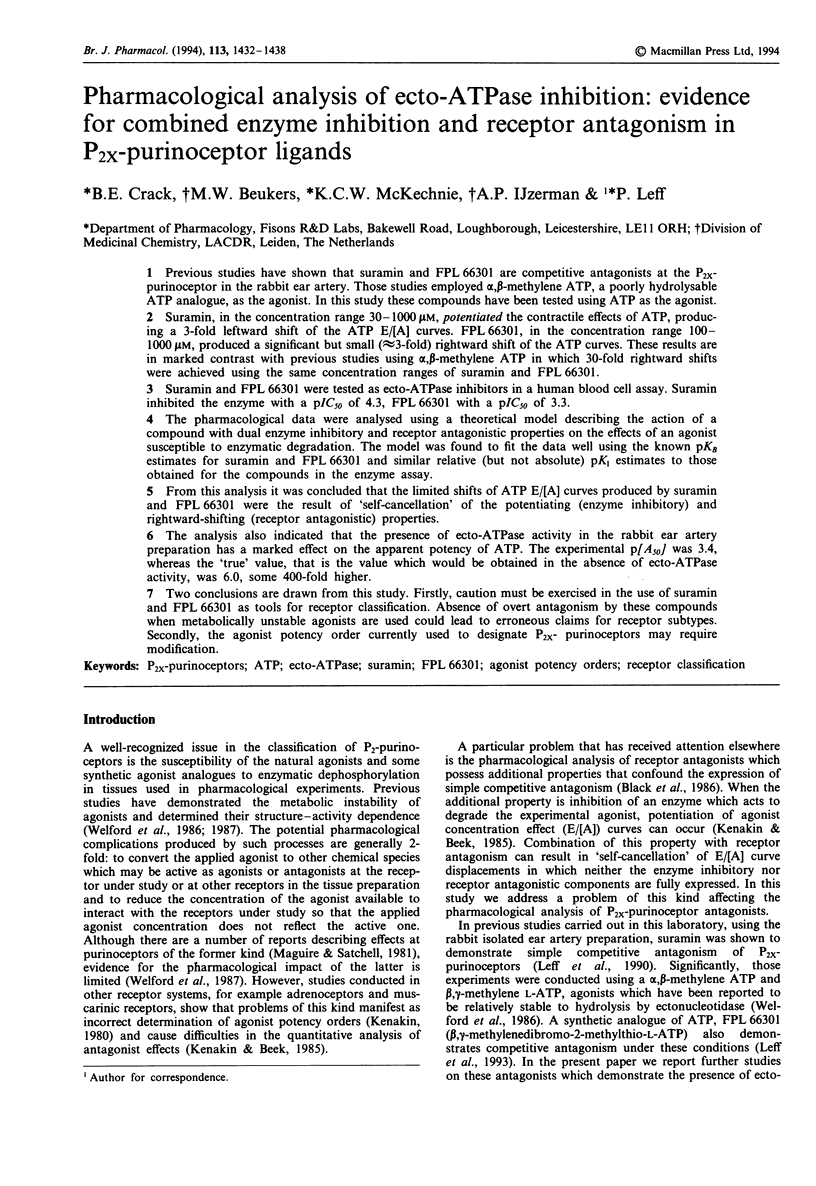
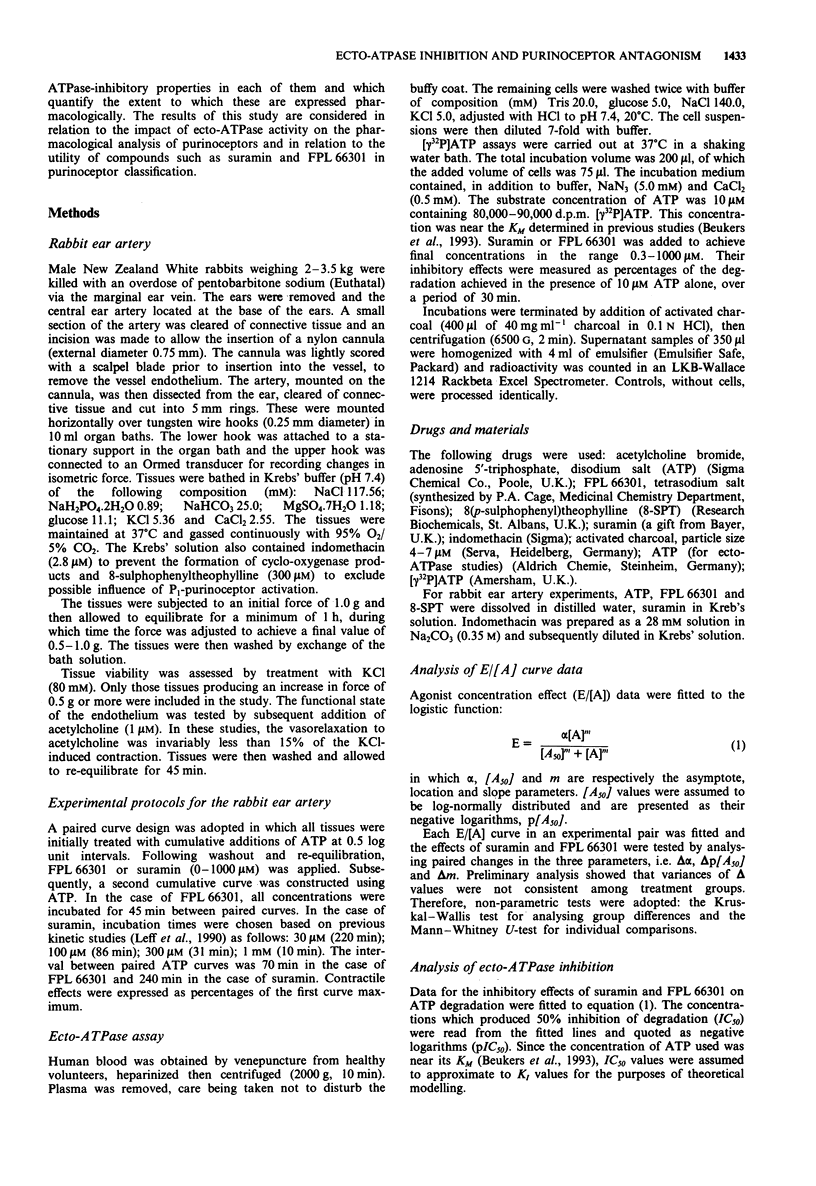
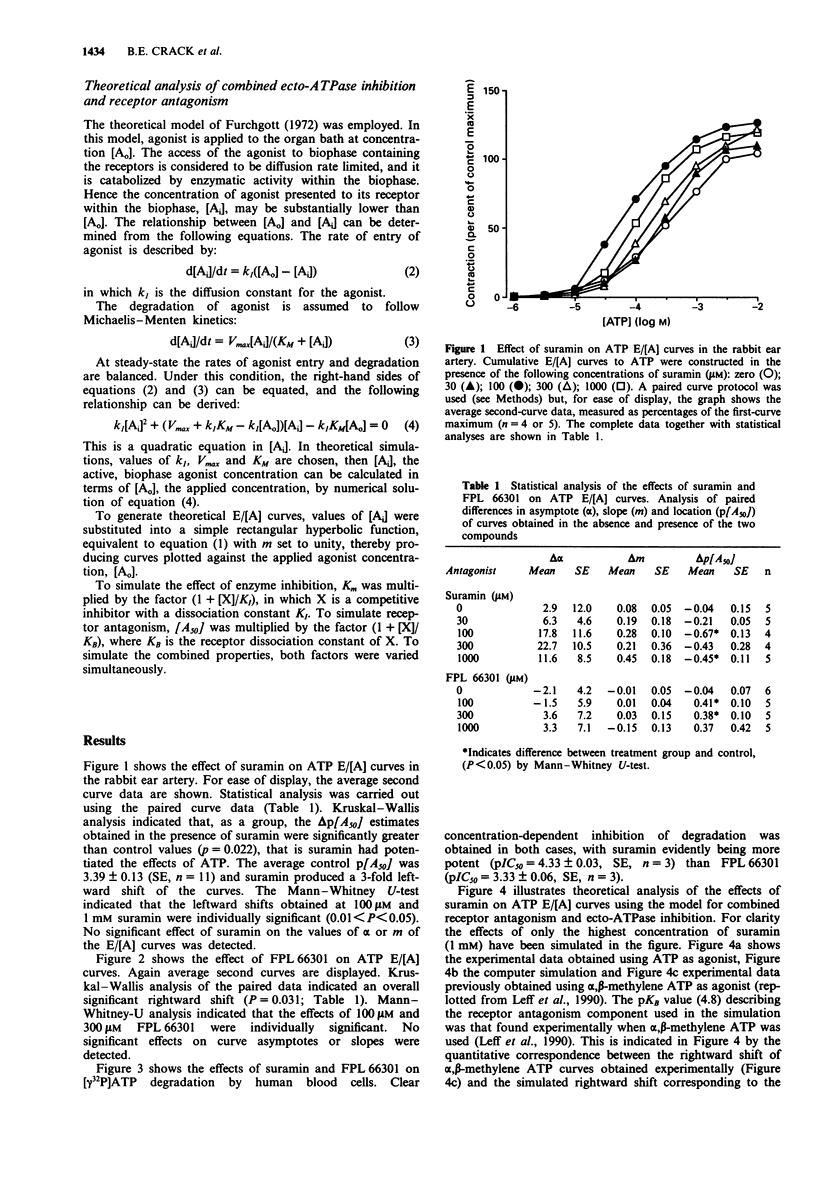
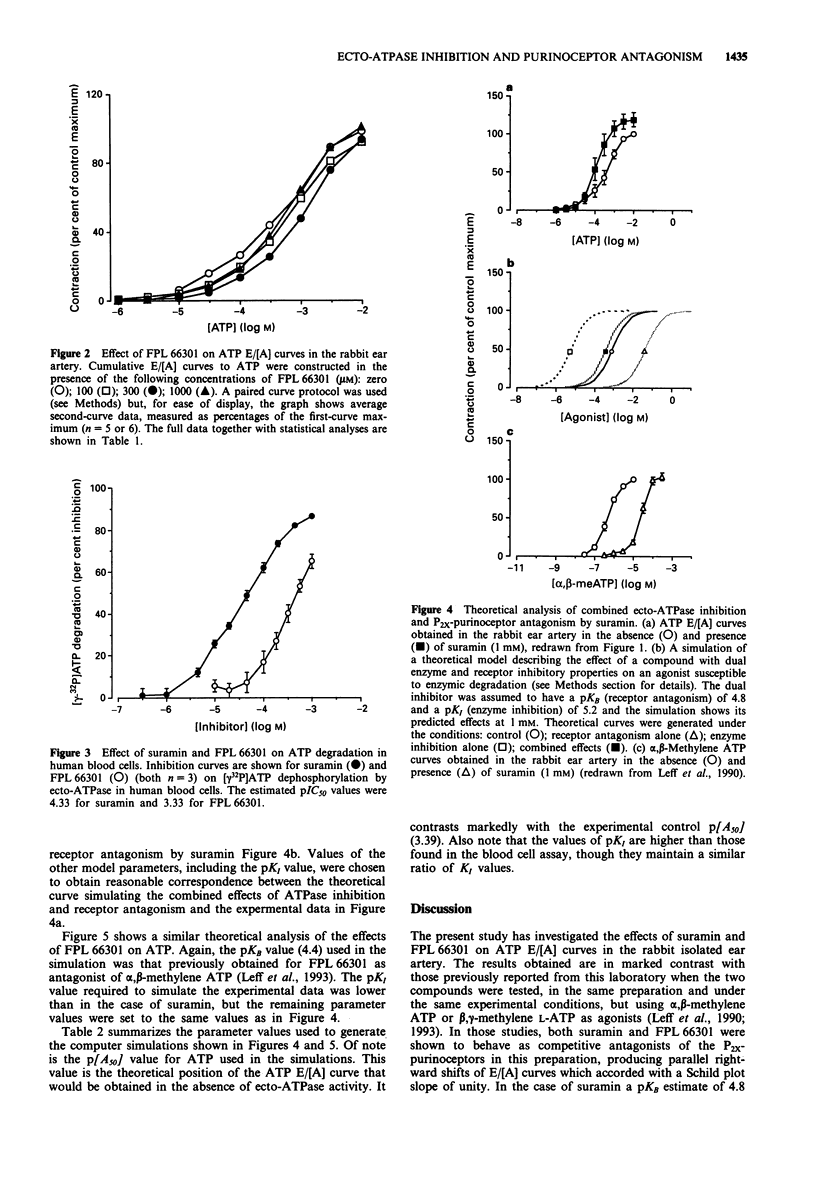
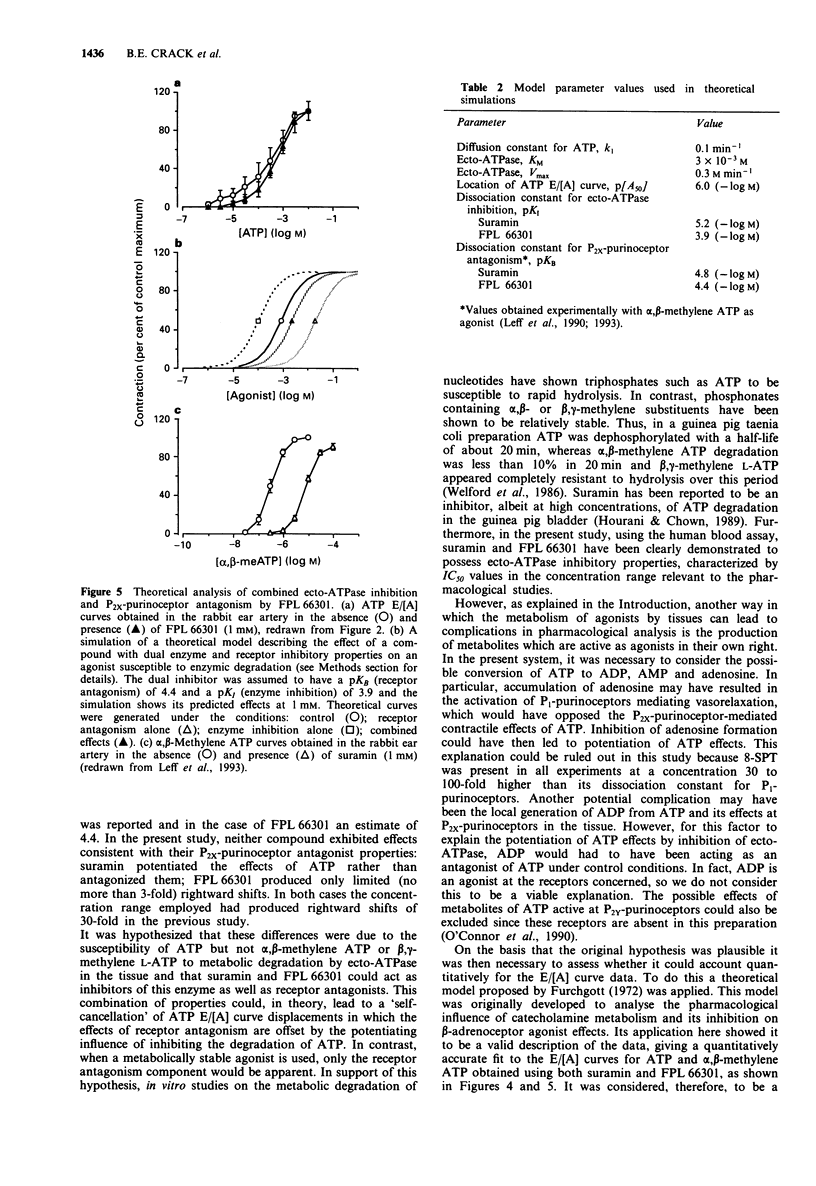
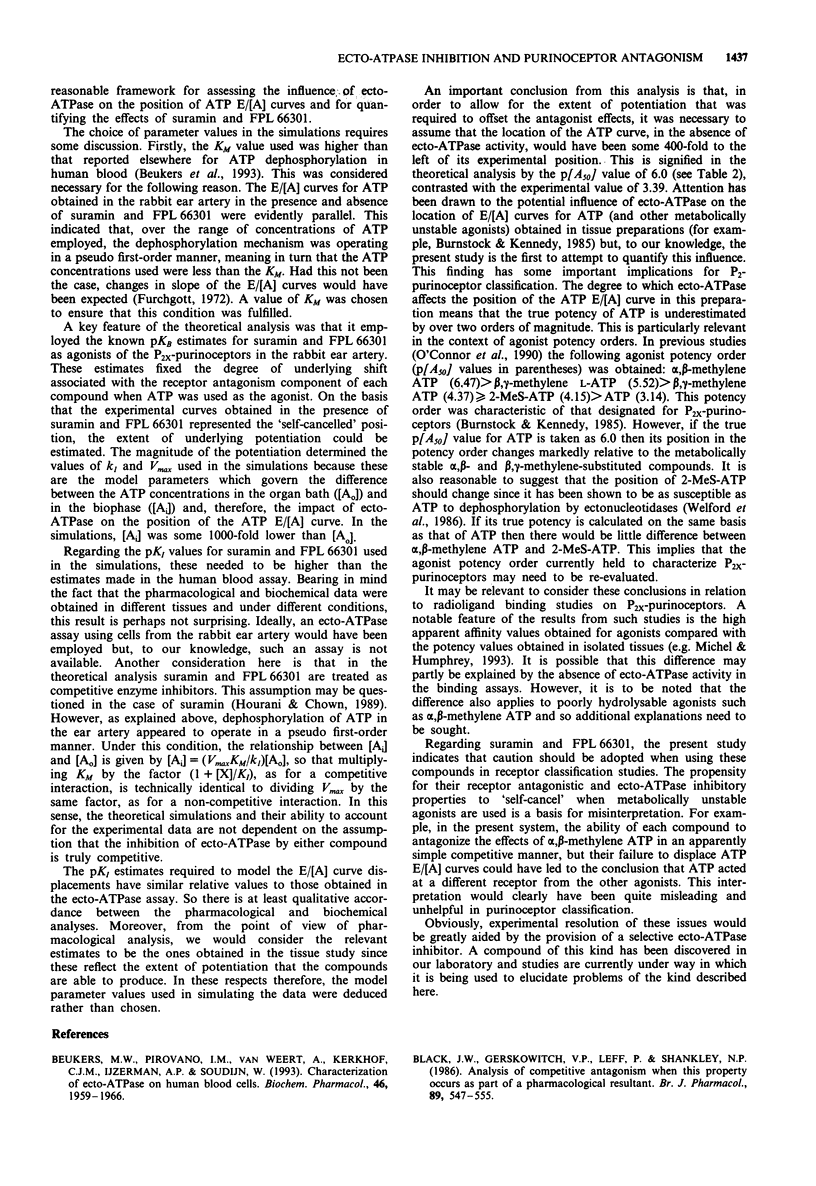
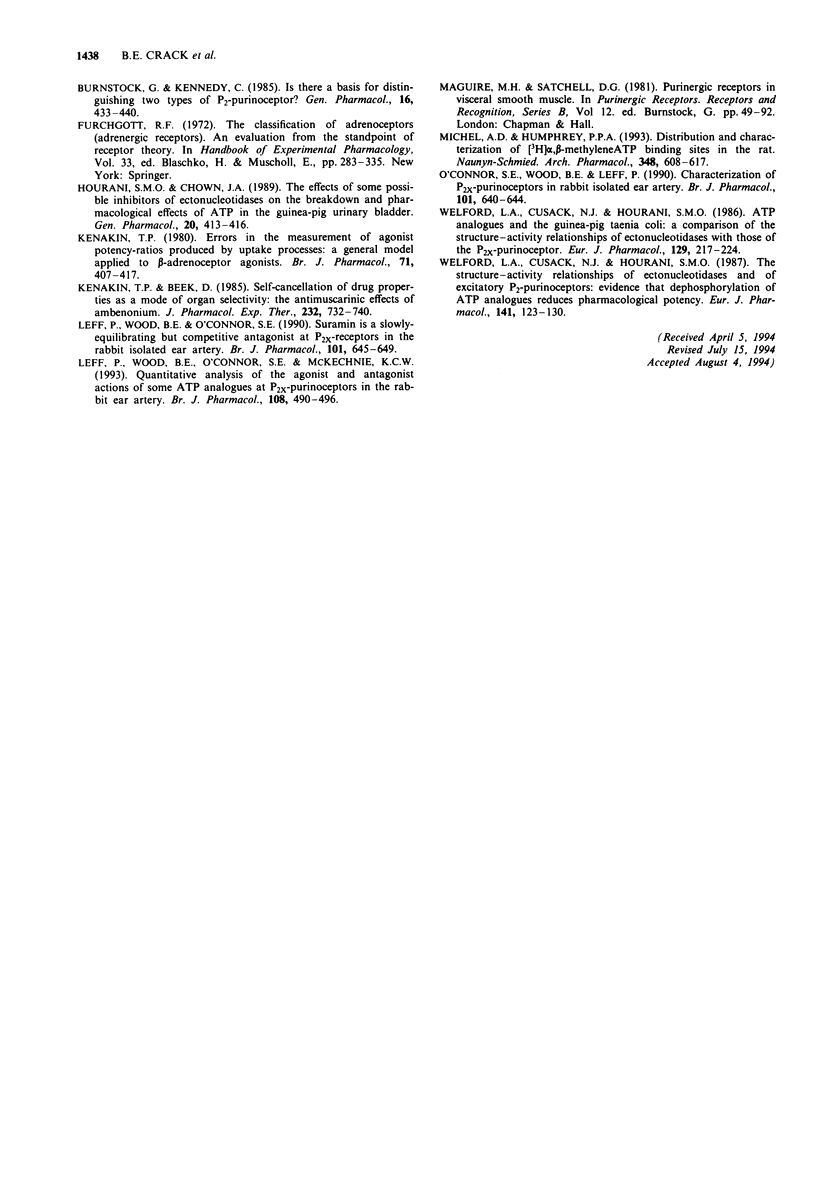
Selected References
These references are in PubMed. This may not be the complete list of references from this article.
- Beukers M. W., Pirovano I. M., van Weert A., Kerkhof C. J., IJzerman A. P., Soudijn W. Characterization of ecto-ATPase on human blood cells. A physiological role in platelet aggregation? Biochem Pharmacol. 1993 Dec 3;46(11):1959–1966. doi: 10.1016/0006-2952(93)90637-c. [DOI] [PubMed] [Google Scholar]
- Black J. W., Gerskowitch V. P., Leff P., Shankley N. P. Analysis of competitive antagonism when this property occurs as part of a pharmacological resultant. Br J Pharmacol. 1986 Nov;89(3):547–555. doi: 10.1111/j.1476-5381.1986.tb11155.x. [DOI] [PMC free article] [PubMed] [Google Scholar]
- Burnstock G., Kennedy C. Is there a basis for distinguishing two types of P2-purinoceptor? Gen Pharmacol. 1985;16(5):433–440. doi: 10.1016/0306-3623(85)90001-1. [DOI] [PubMed] [Google Scholar]
- Hourani S. M., Chown J. A. The effects of some possible inhibitors of ectonucleotidases on the breakdown and pharmacological effects of ATP in the guinea-pig urinary bladder. Gen Pharmacol. 1989;20(4):413–416. doi: 10.1016/0306-3623(89)90188-2. [DOI] [PubMed] [Google Scholar]
- Kenakin T. P., Beek D. Self-cancellation of drug properties as a mode of organ selectivity: the antimuscarinic effects of ambenonium. J Pharmacol Exp Ther. 1985 Mar;232(3):732–740. [PubMed] [Google Scholar]
- Kenakin T. P. Errors in the measurement of agonist potency-ratios produced by uptake processes: a general model applied to beta-adrenoceptor agonists. Br J Pharmacol. 1980;71(2):407–417. doi: 10.1111/j.1476-5381.1980.tb10953.x. [DOI] [PMC free article] [PubMed] [Google Scholar]
- Leff P., Wood B. E., O'Connor S. E., McKechnie K. Quantitative analysis of the agonist and antagonist actions of some ATP analogues at P2X-purinoceptors in the rabbit ear artery. Br J Pharmacol. 1993 Feb;108(2):490–496. doi: 10.1111/j.1476-5381.1993.tb12830.x. [DOI] [PMC free article] [PubMed] [Google Scholar]
- Leff P., Wood B. E., O'Connor S. E. Suramin is a slowly-equilibrating but competitive antagonist at P2x-receptors in the rabbit isolated ear artery. Br J Pharmacol. 1990 Nov;101(3):645–649. doi: 10.1111/j.1476-5381.1990.tb14134.x. [DOI] [PMC free article] [PubMed] [Google Scholar]
- Michel A. D., Humphrey P. P. Distribution and characterisation of [3H]alpha,beta-methylene ATP binding sites in the rat. Naunyn Schmiedebergs Arch Pharmacol. 1993 Dec;348(6):608–617. doi: 10.1007/BF00167237. [DOI] [PubMed] [Google Scholar]
- O'Connor S. E., Wood B. E., Leff P. Characterization of P2x-receptors in rabbit isolated ear artery. Br J Pharmacol. 1990 Nov;101(3):640–644. doi: 10.1111/j.1476-5381.1990.tb14133.x. [DOI] [PMC free article] [PubMed] [Google Scholar]
- Welford L. A., Cusack N. J., Hourani S. M. ATP analogues and the guinea-pig taenia coli: a comparison of the structure-activity relationships of ectonucleotidases with those of the P2-purinoceptor. Eur J Pharmacol. 1986 Oct 7;129(3):217–224. doi: 10.1016/0014-2999(86)90431-0. [DOI] [PubMed] [Google Scholar]
- Welford L. A., Cusack N. J., Hourani S. M. The structure-activity relationships of ectonucleotidases and of excitatory P2-purinoceptors: evidence that dephosphorylation of ATP analogues reduces pharmacological potency. Eur J Pharmacol. 1987 Sep 2;141(1):123–130. doi: 10.1016/0014-2999(87)90418-3. [DOI] [PubMed] [Google Scholar]


